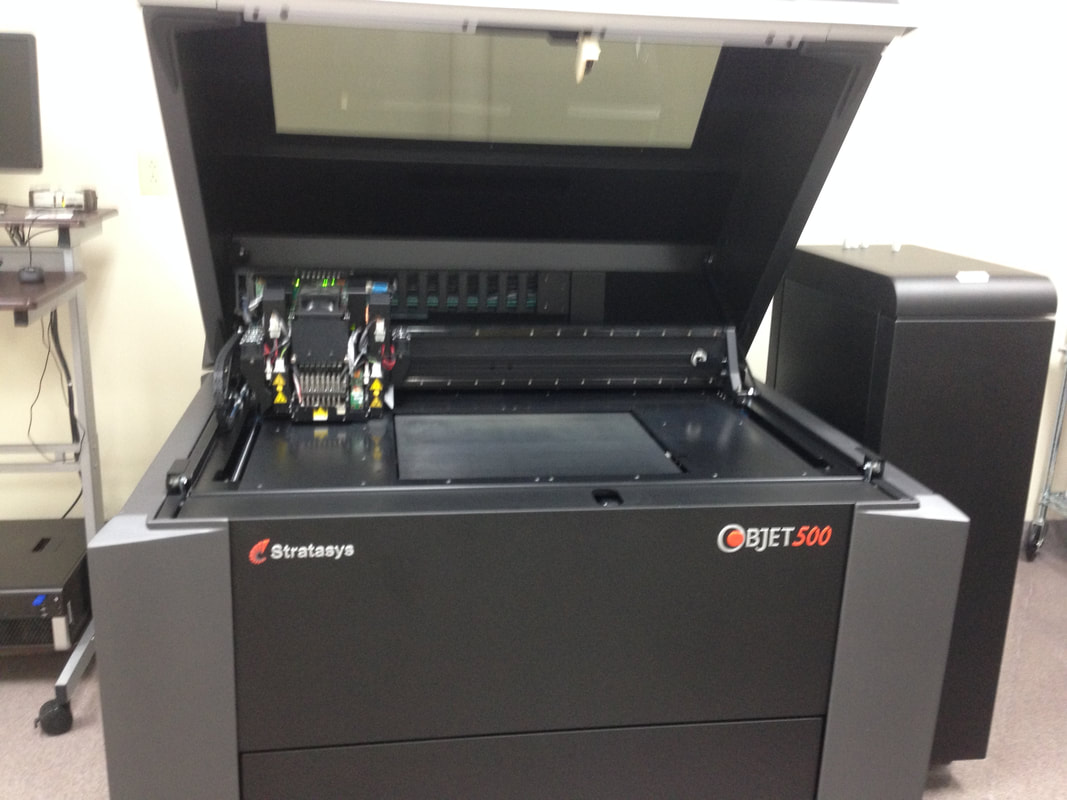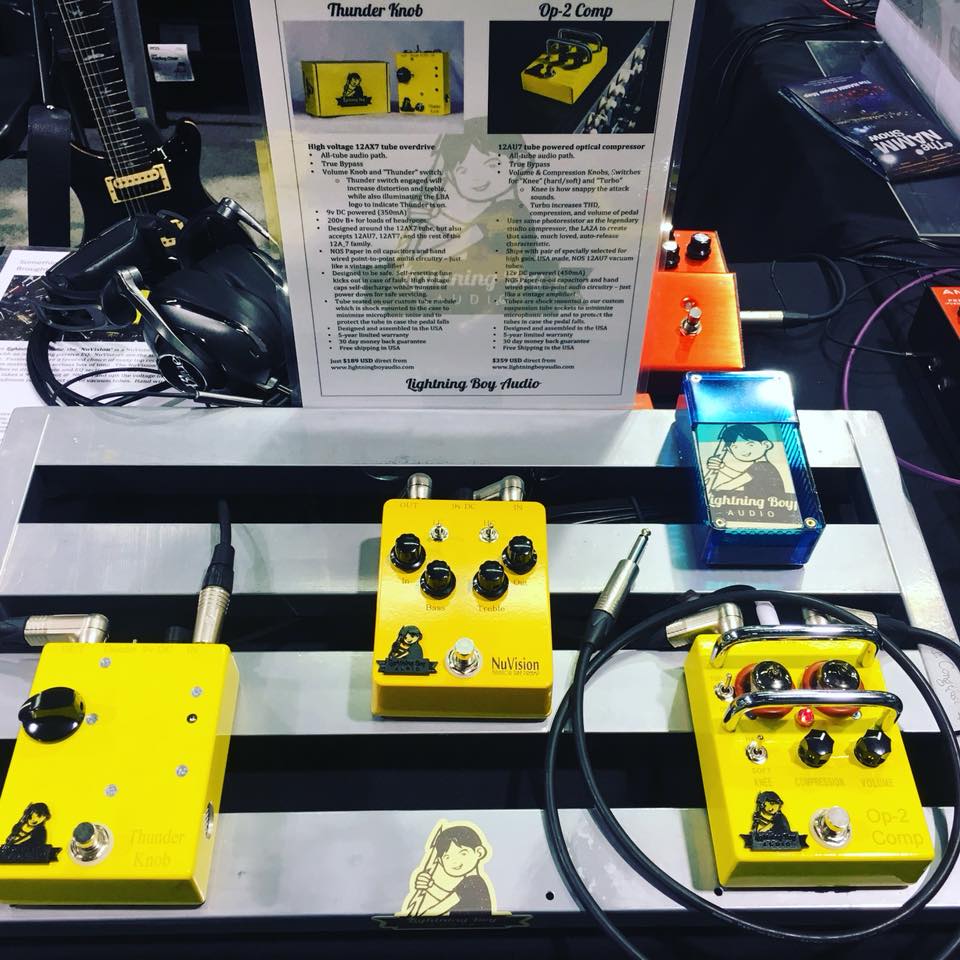|
Due to recent events of the trolling nature, I decided it best to reboot the YT & FB. Since neither were massively huge to begin with I thought this would be a great opportunity to try out some fresh new ideas. Each Friday morning I'm going to try to upload a new informative video. The topics can range from audio electronics tips, history, and practical knowledge to music production tips and associated DIY gizmos for getting the job done. You can find the new channel at www.youtube.com/LightningBoyAudio.
The new facebook page is at www.facebook.com/lightningboyaudio and I plan to continually upload photos of custom builds, under construction shots, and prototypes, along with related videos. Please subscribe to the YT and like the FB to stay up on new creative developments. Thank you! The design of my Trinity channel strip started in September of 2015. I'm literally days away from completing the design. The past few days have been devoted to finalizing the front panel layout. The next few will be the back panel layout... and then its on to designing the packaging! The electronics aspect was completed in full less than a week ago with the addition of a brand new control - presence. This is an additional knob located in the EQ section of the channel strip. It provides a boost-only shelving control of 15kHz and up. I deemed this as absolutely necessary after hearing it in action. It makes the EQ section far more versatile. I've used Trinity prototypes for a long time in the studio now. I have been using the equalizers for mixing and have found them to be rather limited. One area was they couldn't do enough top end boost with dark ribbon mics and other dark sounds that I would like to sound bright. The new presence control alleviates that issue, while surprising me with its very pleasing tone. I was surprised because unlike the rest of EQ circuitry or any EQ I ever made before, the presence control is an active EQ filter. Complex tone shaping of the upper mid to upper high frequency range can now be accomplished with a combination of the high cut switch, the treble knob, and the presence knob. In the past year and especially the past month I moved extremely far with the design of the channel strip thanks mostly to perseverance, but also to a laundry list of CAD programs. I finally forced myself to learn a bunch of important design programs, which allowed me to simulate the circuitry, design the enclosure, and design the PCB for the power supply. I'm finally starting to feel relieved and very excited since I can now taste the finish line after so much hard work, stress and frustration, tons of man hours, and loads of money. This really is my greatest design and I can hardly wait to finally unveil my completed masterpiece. I started designing my masterpiece to be in September of 2015. Its now April of 2018 and she's still not ready. I've been very close to having it complete for a few months now. I've logged thousands of studio hours with my pair of prototype units. There have been some issues with the onboard power supply getting too hot during long sessions, causing some components to fail. I was able to resolve that issue, but they still run hot. A couple weeks ago I took it upon myself to learn the workings of LTspice IV, a computer program designed to run accurate simulations of complex circuits. In the past week I worked nearly 50 hours in LTspice running simulations of the current Trinity circuitry and then designing an improved version. In the program it now seems to be quite impressive in terms of performance and stability. The phantom power section is now capable of delivering a regulated low noise 48v at 250mA, more than most microphones will ever need. I also discovered that the frequency response of Trinity is not as flat as I thought at the sub bass end of the audio spectrum. Turns out the program is more accurate than my test gear. Looks like at 20Hz there was a drop off of about 0.7dB when compared to 100Hz. Not a lot at all, but there was also a phase shift that occurred right at 20Hz. I was able to get that drop at 20Hz to be 0.04dB with the phase shift happening at 10Hz (inaudible). These subtleties would have been next to impossible to see or correct without this program. Seems like a great move on my part to figure it out. I feel a lot more comfortable moving on to the next step in the development of Trinity. It will take some additional capital to move forward, but the next step will be putting together the first production model.
I have had a plan dating back several years to build a line of just 3 pedals. Crazy? Most companies go all out developing many pedals. I wonder if those companies are just dumping out clones. IMO, they must be. It takes WAY too much time and money to develop new ideas, which is exactly what I do. The massive cost and expense of time is a limiting factor for me. The big difference from LBA vs everyone else is the lack of solid state electronics in the audio path, and the total lack of cloning. That makes it tricky for me to make something priced competitively. I realize some collectors will instantly recognize the value in my products the moment they hear about them, but I can't rely on them to sustain my business. I price my products below what I think they are worth because I want "you" to hear it for yourself. I want "you" to try it so you understand what its all about (30-day money back guarantee). Its not just a pedal. Its a work of Art that I'm very proud of and would like to share with the world. If I charged what I know its worth, I would be limiting my business to the collectors. I'd like to share my Art with musical Artists to inspire them to create new Art. We can do great things together!
There's been quite a few people interested in the NuVision... mainly, interested in more demos. Thats definitely something scheduled down the pipeline, but there are holdups slowing down progress. The holdups have been case manufacturing and PCB manufacturing. These two things, by two different companies are taking longer than initially expected. I should have the first small batch of cases this coming week and a large order of PCB's coming in hopefully by the end of the week. Basically, I'll have 10 NuVision pedals to work with in early March. Just 6 will be available for sale, with the remaining 4 going off for reviews/demos. Sales this month have been exceptionally good, so I expect those 6 pedals will sell before I can get more cases made. Another case order is planned for early March so I can keep up with anticipated sales. Expect to see some 3rd party demos of the NuVision in April.
I've never done a kickstarter, gofundme, or similar online fundraiser. Consider the auction I'm about to tell you about as my own version. I need to raise capital for some big moves for LBA and so I'm selling off a few personal items. The most noteworthy item is the original prototype for the Thunder Knob pedal... serial #000. I put it up on Ebay this morning. If you'd like to help LBA grow and potentially own a piece of LBA history, please check out the listing. I started the bidding at just $49.99. https://www.ebay.com/itm/Lightning-Boy-Thunder-Knob-prototype-000-12AX7-vacuum-tube-overdrive-pedal/263494047744?ssPageName=STRK%3AMEBIDX%3AIT&_trksid=p2060353.m1438.l2649 LBA is participating at NAMM in a shared booth, hosted by Delicious Audio/The Deli. Stop by booth 3231 today for the opportunity to check out the brand new NuVision! Guitar, headphones, and amp simulator all provided. LBA will not be present tomorrow. I decided to leave after today to avoid some extra fees, which I think are ridiculous. Plus, Sunday is only a half day.
|
Details
About the AuthorMike Congilosi II, Owner/Designer/Electronics Engineer at Lightning Boy Audio and Owner/Audio Engineer/Music Producer at LBA Studios. Archives
July 2025
Categories |

 RSS Feed
RSS Feed

